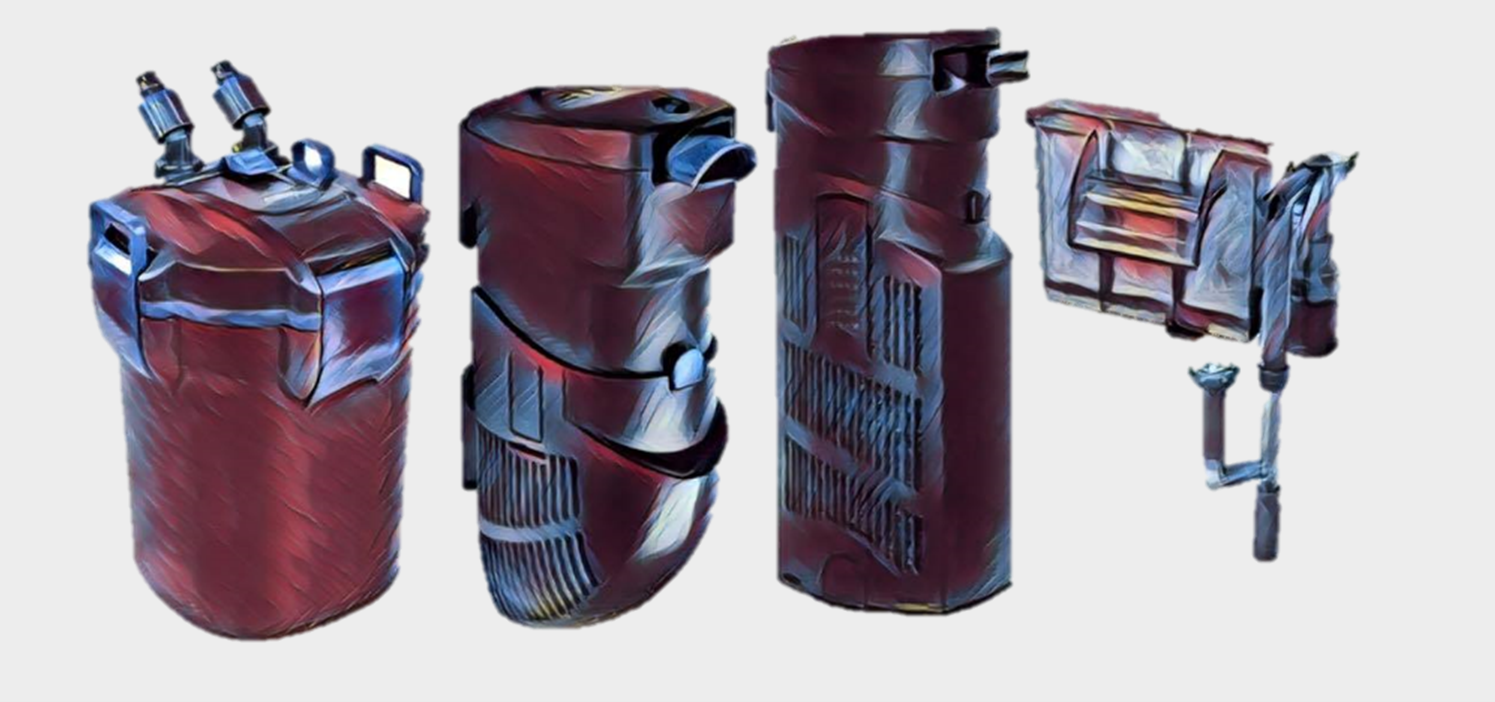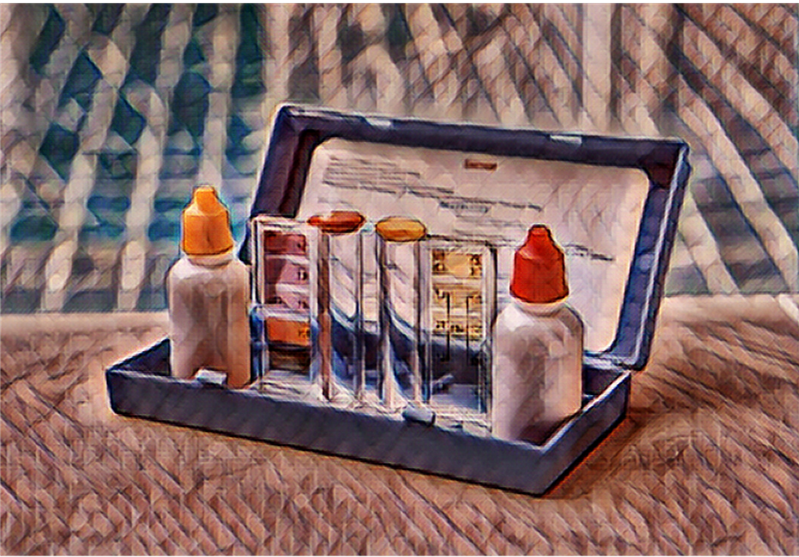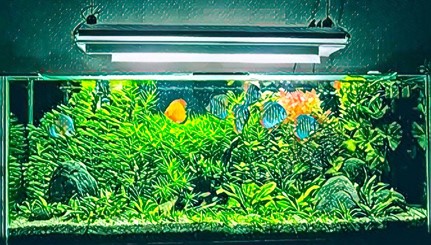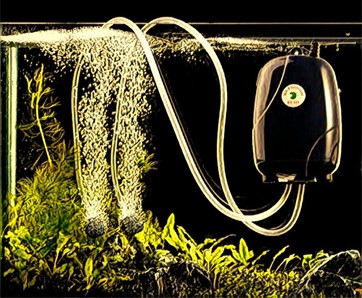
Setting up an aquarium
A simple list of what we suggest you need to set up your first basic aquarium.
Hello readers,
Setting up an aquarium can be a daunting experience, especially for those of you who have never set one up before. Many new fish enthusiasts get overwhelmed with the vast amount of options and recommendations available on the internet, and it can be even more daunting when walking into an aquarium store and being greeted with the following;
This article is here hopefully to serve as a basic guide for items you should consider when setting up a new aquarium. We will keep this simple and succinct and run through each of the key items in a basic setup. Keep in mind you would like to end up with a functional, good looking and appropriate display that keeps your fish happy and healthy. We’ll expand on all aspects of this info in future For Fish Blogs.


A tank with a lid
The size of the tank should be selected based on the species of fish you wish to keep. Consider the size your fish may grow to, as well as the number of fish you want to have. If you are yet to decide, or are looking for some ‘FINSPIRATION’ we recommend having a look online or at aquarium stores to see if anything jumps out at you. At For Fish we would recommend displaying the local native fish in your area. We’re happy to advise and as a For Fish member you will have access to lots of info on fish keeping and care.
Gravel or substrate
This comes in a myriad of colours and textures. If you would like to set up a tank that mimics a natural habitat then pick a neutral coloured gravel, or you just pick what tickles your fancy the most! As long as whatever you use doesn’t affect the water quality for the fish you’re keeping, the skies are the limit for options.

Filter
There are two types of filtration needed for your aquarium. These are:
1. Suspended solids filtration (i.e. mechanical) – It removes solid waste matter and allows you to see your fish.
2. Biological filtration (i.e. living bacteria etc) – Neutralises metabolic waste products.
The size of filters needed is dependent on a number of factors
– The total amount of water held within your tank
– The ‘biological’ mass within your tank – i.e plants, fish and any other living things in your tank
To make it plain and simple, the more fish or plant life you plan to have in your tank, the larger the filter capacity you will need. Going bigger is always better with filters because it gives you some wiggle room with maintenance. If you have decided that you are getting ONE Siamese fighting fish then you might need not worry about getting a filter if you have lots of water and plants.

IMPORTANT NOTE: When your filter is set up, it is NOT ready for use. A filter needs between 4 to 8 weeks to establish depending what system (Marine or Freshwater). If you place fish into the tank prior to the filter being established, your fish will be at risk of new tank syndrome.
If you would like more information on filtration, please contact us directly.

Water testing kit and water treatments
What is the water source for your tank? Depending on the type of water you are using you may need to treat it before using it for your fish. Generally, tap water will need to be de-chlorinated prior to use. Marine systems also need an appropriate salt infused water to keep the animals happy. We recommend getting a full fresh or marine water testing kit and using it weekly. Water chemistry is never stagnant and you will find patterns and fluctuations in parameters such as pH as well as the nitrogenous wastes. Testing the water yourself will provide mountains of information to you that will aid in tank management and husbandry.
Nets
It’s a no brainer that nets are needed when caring for fish but it is important to get the right type of net. Fish scales represent the primary physical barrier keeping bacteria and parasites out. There are many properties of the scales and skin that are involved in the immune defence of these animals so it is important to handle them with care to protect this barrier. We recommend choosing soft nets that are not coarse to the touch. Coarse nets can rub and damage the skin of fish leaving them vulnerable to disease.

Plants or coral (fake or real) and Decorations
Having a good environment reduces fish stress and improves health. Plants, timber and coral are natural elements in fish habitats (depending on whether they are freshwater or ocean dwelling fish) and serve as enrichment for your animals. Enrichment can be a great way to stimulate natural behaviours in fish as well improve welfare, behaviour, growth performance, survival and physiology. Bare tanks with no plants or coral can leave animals exposed and in constant stress which has a negative impact on fish health. To help the overall health of your fish we recommend adding decorations or plant and coral enrichment.
Lighting
Lighting is recommended for those with indoor tanks, especially marine tanks which require UV lighting. Outdoor tanks often don’t need supplementary lighting, as the day night rhythms that are important in establishing fish circadian cycles will occur with exposure to natural sunlight. Fish in indoor tanks however, will need supplementation with artificial light to ensure exposure to the right amount of light during the day. You can mimic dawn and sunset by using multiple lights, turning each off or on, in a cycle that mimics varying daylight lengths. Lights are essential if you are maintaining live green plants in your tank.


Temperature Control – Heaters / Chillers
The species of fish you are keeping will determine whether you require a heating or cooling element. Aquarists celebrating native species in their home tanks may not have to worry about water temperature as these species are used to the temperature fluctuations of the local environment. However, those keeping tropical fish in colder climates will require heating facilities in their tanks to keep their fish happy and thriving.
Air-Pumps
The air pump functions to increase oxygen in the water by causing ripples at the surface and moving water around the tank. In highly stocked tanks, an air pump is an essential tool to ensure there is enough oxygen in the water for all of your fish and microbes, in all parts of the tank.

And there you have it folks. A simple list of basic items you need when setting up a tank as a new fish keeper. As you continue to nurture your interest here we have no doubt that you will soon be levelling up and diving into more complex tank set ups making use of the amazing technology available such ultra-violet filters and carbon dioxide set ups to expand your fish care standards.
Here at For Fish, we hope this list will help begin your fish-keeping journey on the right foot.
Tank cleaning bits and bobs
The best maintenance tool you can purchase for your aquarium is a gravel siphon. It will allow you to do a minimal cleaning routine for a basic tank each week. This is for the gravel to be cleaned weekly using a gravel vacuum whilst draining approximately 20-25% of the water and for the tank glass to be cleaned as needed. Cleaning your tank is not just important from a visual perspective, but also has benefits for your overall tank health as well. All fish produce waste which does not necessarily get removed by the filter. As this waste builds up so does your organic matter within the tank, and unwanted pockets of bacteria and toxicants may begin to flourish. By having a weekly cleaning regime that aligns with your water changes you can ensure the tank is kept clean and your fish unburdened.
Collaborate with US

Sponsorships
Sponsored content that’s sustainable, relevant and evidence based.

Your Tips
Tell us your tips and tricks in improving your animal husbandry techniques.

Your Fish
Send us your best snaps of your fish and tell us what you are most proud of in your system.
